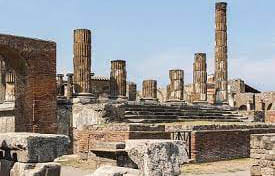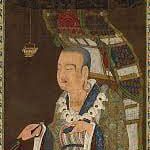Archeology: The Study of Past Human Culture
Archeology The Study of Past Human Culture
Archeology: The Study of Past Human Culture
Archeology is the scientific study of the remains of past human culture. Archaeologists investigate the lives of early people by studying the objects that people left behind. Such objects include buildings, artwork, tools, bones, and pottery. Archaeologists can make exciting discoveries, such as a tomb full of gold or the ruins of a magnificent temple in the middle of the jungle. However, the discovery of some stone tools or hard corn kernels may reveal even more about early people.
Archaeological research is one of the main tools for learning about the societies that existed before the invention of writing about 5,000 years ago. It also provides an important complement to our knowledge of ancient societies that left written records. In America, archeology is considered a branch of anthropology, the scientific study of humanity and human culture. However, European archaeologists consider his work to be closely related to the field of history. Archeology differs from history in that historians primarily study the lives of people as recorded in written documents. Archaeologists seek information about how, where, and when cultures developed. Like other social scientists, they look for reasons why major changes have occurred in certain cultures. Some archaeologists try to understand why ancient people stopped hunting and started farming. Others develop theories about what caused people to build cities and establish trade routes. In addition, some archaeologists look for reasons for the decline of early civilizations such as the Maya in Central America and the Romans in Europe.
Archaeologists examine any evidence that may help them to explain how people lived in the past. Such evidence ranges from the ruins of a large city to a few stone blocks that someone left behind long ago.
There are three basic types of archaeological evidence–artifacts, features, and ecological facts. Artifacts are objects that were made by people and that can be moved without changing their appearance. Artifacts include objects such as arrowheads, vessels and beads. Artifacts from societies with written histories may also include clay tablets and other written records. The features mainly include houses, tombs, irrigation canals and other large structures built by ancient people. Unlike artifacts, features cannot be separated from their surroundings without changing their appearance. Ecological facts show how ancient people reacted to their environment. Examples of ecological facts include seeds and animal bones. Any place where archaeological evidence is found is called an archaeological site. In order to understand the behavior of the people who lived at a site, archaeologists must study the relationship between the artifacts found there, the features, and the ecology. For example, the discovery of a stone spearhead near the bones of an extinct species of buffalo at a site in New Mexico suggested that early humans hunted buffalo in that area.
If objects are buried deep in the ground, their position on the earth also worries archaeologists. Scientists study the layers of soil and rock in which objects are found to understand the conditions when the objects were placed there. In some places, archaeologists find deposits of several layers called strata. In geology, the archaeological study developed from the study of layers of rocks is called stratigraphy. Archaeologists use specialized techniques and equipment to accurately collect archaeological evidence. They also keep detailed records of their findings because most archaeological research destroys the remains being studied. The first task of an archaeologist is to locate the sites. Sites can be found above, underground or under water. Some large sites are easy to find because they are clearly visible or can be traced to descriptions in ancient stories or other historical records. Such sites include the pyramids of Egypt and the ancient city of Athens in Greece.
Archaeologists use systematic methods to search for sites. The traditional method of locating all sites in an area is through a foot survey. In this method, archaeologists walk themselves over measured distances and in pre-determined directions. Each one goes on to find archaeological evidence. Scientific methods are used to aid in the discovery of underground sites. Aerial photography, for example, can reveal variations in vegetation that indicate the presence of archaeological evidence. Archaeologists describe, photograph, and count those objects. They group objects by type and location. Three steps are followed to interpret the evidence found. They are classification, dating and evaluation. 0 0 0.
Archeology The Study of Past Human Culture
N. B. This article ‘Archeology The Study of Past Human Culture’ originally belongs to the book entitled ‘Gleaned Essays‘ by Menonimus.
Books of Composition by M. Menonimus:
- Advertisement Writing
- Amplification Writing
- Note Making
- Paragraph Writing
- Notice Writing
- Passage Comprehension
- The Art of Poster Writing
- The Art of Letter Writing
- Report Writing
- Story Writing
- Substance Writing
- School Essays Part-I
- School Essays Part-II
- School English Grammar Part-I
- School English Grammar Part-II..
Books of S. Story by M. Menonimus:
Related Search:
- Archeology
- Archeology The Study of Past Human Cultures
- Archeology and Human Evolution











